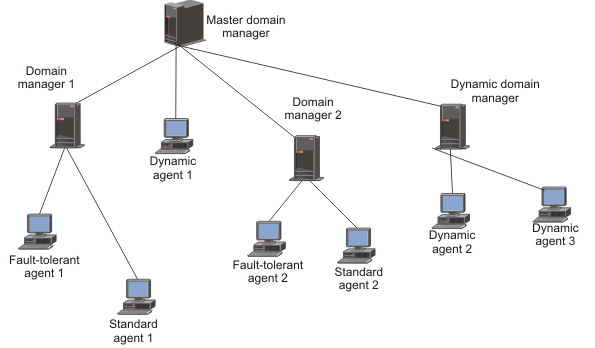The HCL Workload Automation network
An HCL Workload Automation network is made up of the workstations, or CPUs, on which jobs and job streams are run.

Using multiple domains reduces the amount of network traffic by reducing the amount of communication required between the master domain manager and other computers.
In a single domain configuration, the master domain manager maintains communication with all of the workstations in the scheduling network.
In a multi-domain configuration, the master domain manager communicates with the workstations in its domain and with the subordinate domain managers. The subordinate domain managers, in turn, communicate with the workstations in their domains and with their subordinate domain managers. Multiple domains also provide fault-tolerance by limiting the problems caused by losing a domain manager to a single domain. To limit the effects further, you can designate backup domain managers to take over if their domain managers fail.
Every time the production plan is created or extended the master domain manager creates a production control file, named Symphony®. HCL Workload Automation is then restarted in the network, and the master domain manager sends a copy of the new production control file to each of its automatically linked agents and subordinate domain managers. The domain managers, in turn, send copies to their automatically linked agents and subordinate domain managers.
Once the network is started, scheduling messages like job starts and completions are passed from the agents to their domain managers, through the parent domain managers to the master domain manager. The master domain manager then broadcasts the messages throughout the hierarchical tree to update the production control files of domain managers and fault tolerant agents running in Full Status mode.